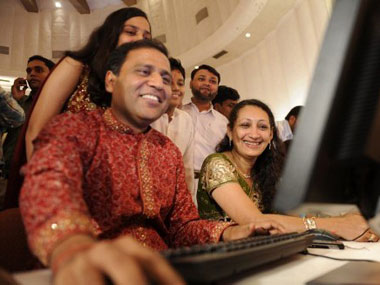Markets have their ups and downs. Markets have had their downs in the May- September 2013 period and now they can have their ups.
The Sensex and Nifty are poised for record levels this Diwali, three years since the indices touched record levels around 2010 Diwali. The Sensex and Nifty are trading at levels of 20,500 and 6100 as of 11th October 2013, off by 2.3% and 3.5% from record levels of 21004 and 6312 seen on the 5th of November 2010.
The Indian Rupee (INR) has come off by over 10% from its record low levels of Rs 68.80 against the USD seen on the 28th of August 2013. Ten year benchmark government bond yield is down 100 bps from highs of 9.4% seen on the 21st of August 2013.
Diwali falls on November 3, 2013 and it does look as if it is going to be a “Very Happy Diwali” for domestic markets. The gloom and doom on markets and the economy when the INR touched all time lows has turned around to a festive cheer for markets. The economy usually lags markets in its optimism.
So why the sudden change in market sentiments and why should it continue going forward?
The change in market sentiments can be attributed to three factors
a) Globally, markets were oversold going into the Fed September policy meet, where the central bank surprised markets by maintaining its asset purchase program size rather than lowering it as expected. The short covering, especially in emerging market currencies that were trading at all time or multi-year lows, took up markets from lows
b) India’s trade and current account deficit showing declining trends on the back of 40% fall in gold and silver imports quarter on quarter and
c) Signs of stability in the both Eurozone and China, with Eurozone just managing to stay above recessionary levels in the second quarter of 2013 and China’s manufacturing index starting to grow from August after many months of contraction.
[caption id=“attachment_139986” align=“alignleft” width=“380”]  Diwali falls on November 3, 2013 and it does look as if it is going to be a “Very Happy Diwali” for domestic markets. The gloom and doom on markets and the economy when the INR touched all time lows has turned around to a festive cheer for markets. The economy usually lags markets in its optimism. Reuters[/caption]
Have things turned around for markets and economy completely?
No. IMF has just downgraded world growth forecasts from 3.1% to 2.9% for 2013 and from 3.8% to 3.6% for 2014. IMF growth forecast for India for this fiscal is 3.8%, well below official estimates of 5.5%. The on going standoff between politicians in the US on passing the budget is expected to hurt the US economy. The Fed has revised its forecasts for the economy downwards by 300bps to 400bps at the upper of the range for 2013 and 2014.
India has managed to lower its trade and current account deficit by restricting gold and silver imports. RBI, while reversing its tight money stance that it adopted to prevent a free fall of the INR is increasing the benchmark repo rate on concerns of rising long term inflation expectations. India is also going to the polls in 2014 and that brings about uncertainty on much needed structural reforms.
Eurozone and China are not out of the woods given concerns on debt and over investments respectively.
Markets can rally despite on going concerns
The US budget standoff has its positives in terms of the Fed delaying the tapering of its asset purchase program. Fresh tapering talks will emerge after the new Fed chairman takes office in January 2014. Fed continuing to buy $85 billion of securities a month will add to market risk appetite.
The festive season in India is post monsoons and given that monsoons have been above normal, there is optimism on consumer spending, especially in the rural areas. The RBI, while looking to raise the benchmark rate, the repo rate, is also adding liquidity into the system through term repos, OMO (Open Market Operations) and swapping USD for INR with banks that are raising FCNR B deposits. RBI is trying to bring down rates at the short end of the yield curve to enable banks to meet the busy season credit demand.
The INR has benefitted from the Fed postponing its tapering and from falling trade and current account deficit. The currency can continue to strengthen on FII flows into equity and debt, as equity markets rise and bond yields fall. India is looking to enter global bond indices and that will lead to increased flows into INR debt as global funds start adding weight to INR bonds.
The ECB has pledged to maintain policy rates at record low levels until it sees signs of recovery in the Eurozone economy and its bond purchases are acting as a deterrent to bond yields of indebted nations such as Italy and Spain from trending up. China’s growth at around 7.5% levels is seen as keeping the country in balance, which is positive for economies globally as commodity prices are kept in check.
Arjun Parthasarathy is the Editor of www.investorsareidiots.com a web site for investors.


)
)
)
)
)
)
)
)
)



